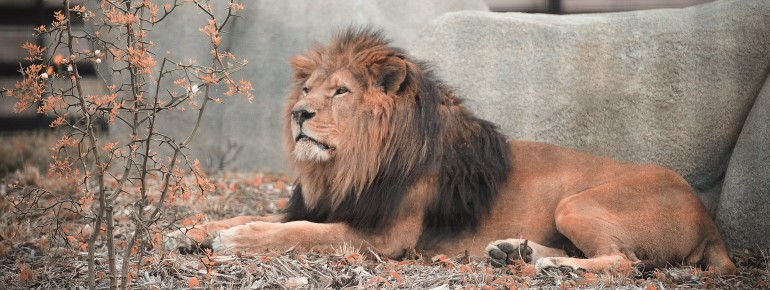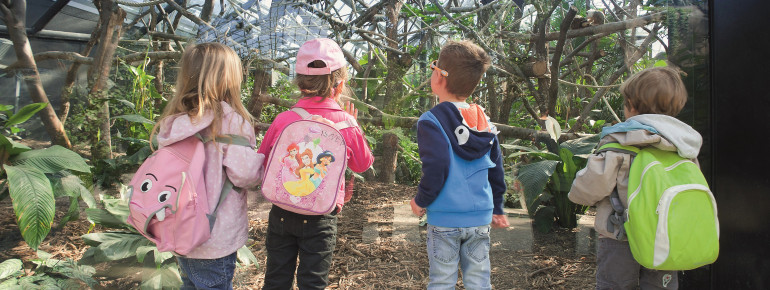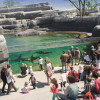Contents
Description
The Parc Zoologique in Paris is located in the southeast of the city in the city forest "Bois de Vincennes". Therefore, it is also known under the name Vincennes Zoo. About 2000 animals are at home here on an area of 14 hectares. The zoo is divided into five different biozones, which are landscaped to resemble the natural habitats of the 180 species.
Visit the tropics
The first biozone takes you to the fourth largest island in the world: Madagascar. In the outdoor area you will find animals of the tropical dry forest such as lemurs, fossas and turtles. In the large glass house you enter the world of the tropical rainforest. Here you will find large bamboo lemurs, colourful birds, chameleons and boas.
The second part of the tropical house belongs to the Amazon-Guyana Biozone. In the branches you will discover primates such as tamarins or white-headed macaws and also sloths and anteaters can be seen here. Manatees live at the foot of the waterfall and tapirs, jaguars, capybaras and forest dogs await you outdoors.
European animal diversity
In the shadow of the striking rock lies the Biozone Europe. Iberian wolves, lynxes and wolverines can be seen among the conifers. In the bird of prey enclosure you will also find endangered species such as the corvid vulture and the red kite. European otters can be seen at a waterfall.
But there is also a lot to discover inside the rock. Various terrariums are home to numerous frog, newt and lizard species that are rarely seen in zoos. You'll also pass snakes and turtles on your way through the 200-square-metre vivarium.
From the Savannah to Patagonia
Before you reach the large mammals of the Sahel-Sudan Biozone, you will pass through the large bird house, which is home to flamingos and storks, among others. In the African savannah, you'll see zebras, baboons and several species of antelope. The highlights of the zoo are the 16 giraffes, the white rhinos and the lions.
The final Biozone takes you to Patagonia. The diverse landscape offers three different habitats. While in the pampas you can spot nandus, guanacos and ostriches, in the Andean forest you will find pumas and pudus. There are also inhabitants of the rocky coast. Sea lions and Humboldt penguins can be seen both on the rocks and underwater.
Historical Information
After two years of planning and construction, the Parc Zoologique de Paris was opened in 1934. Even then, the 65-metre-high rock towered over the zoo and became its symbol. Since hardly anything had been renewed at the zoo until the early 2000s, the park was almost threatened with closure. Therefore, the zoo temporarily closed its doors in November 2008 and was completely renovated over six years. During this time, only the giraffes and the Great Bamboo Lemurs lived in the park, all other animals were housed in other zoos. In 2014, the redesigned zoo was reopened.
Interesting facts
- The day pass at Parc Zoologique Paris is €22 making it one of the 10 cheapest tourist Attractions in Île-de-France.
How to get there
By public transport
The best way to get to the Parc Zoologique is by public transport. Take metro line 1 to Saint-Mandé station (15 minutes walk to the zoo) or line 8 to Porte Dorée station (just under 10 minutes walk to the zoo). Tram T3 also stops at Porte Dorée. In addition, bus lines 46, 86 and 325 go to the Parc Zoologique stop.
By car
The zoo is located southeast of central Paris in the 12th arrondissement. From the Boulevard Périphérique (E15), take the Porte Dorée exit. There are several car parks near the zoo. Some car parks offer discounted parking for zoo visitors. However, this discount only applies if the spaces are booked online in advance.

























